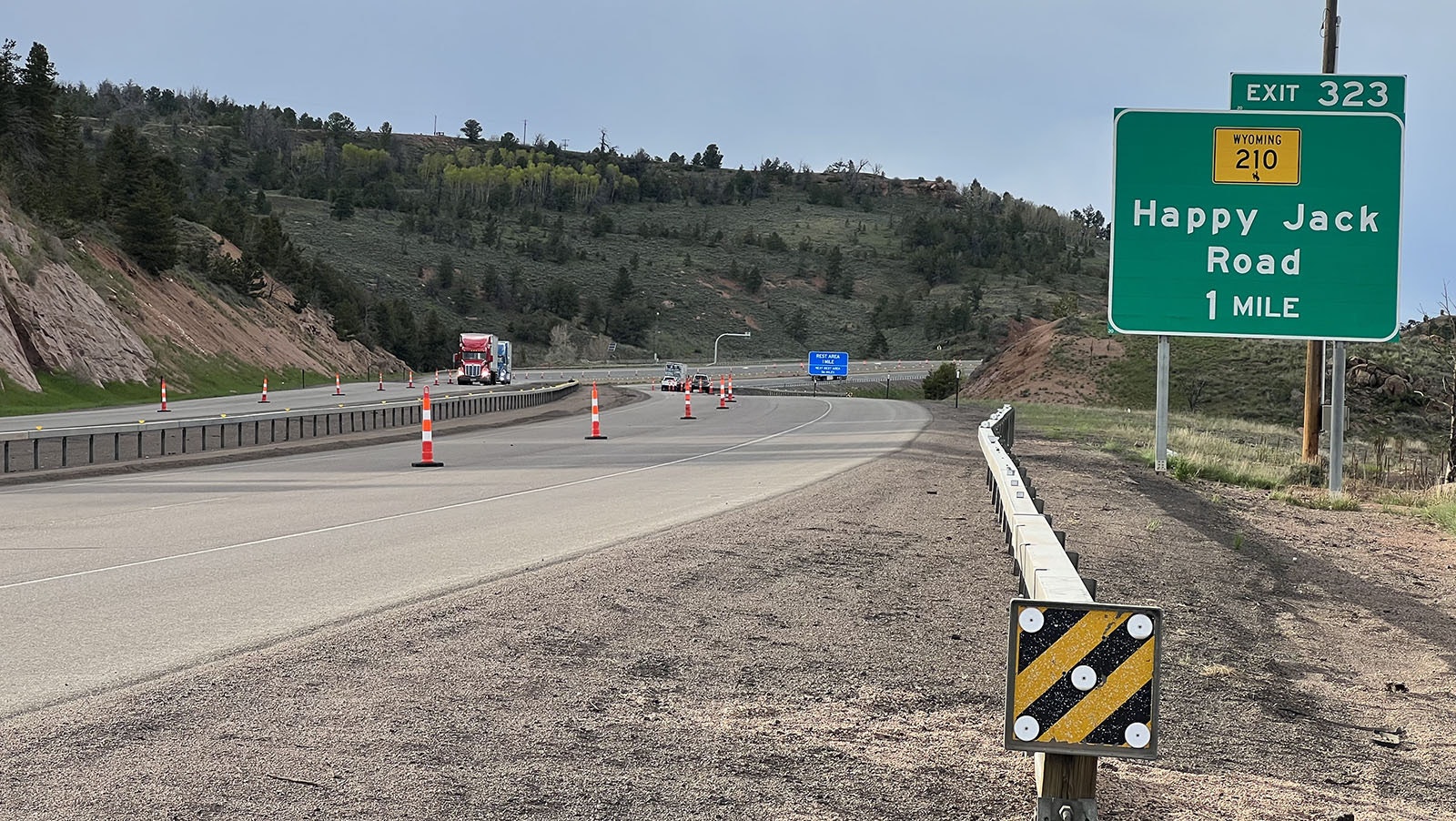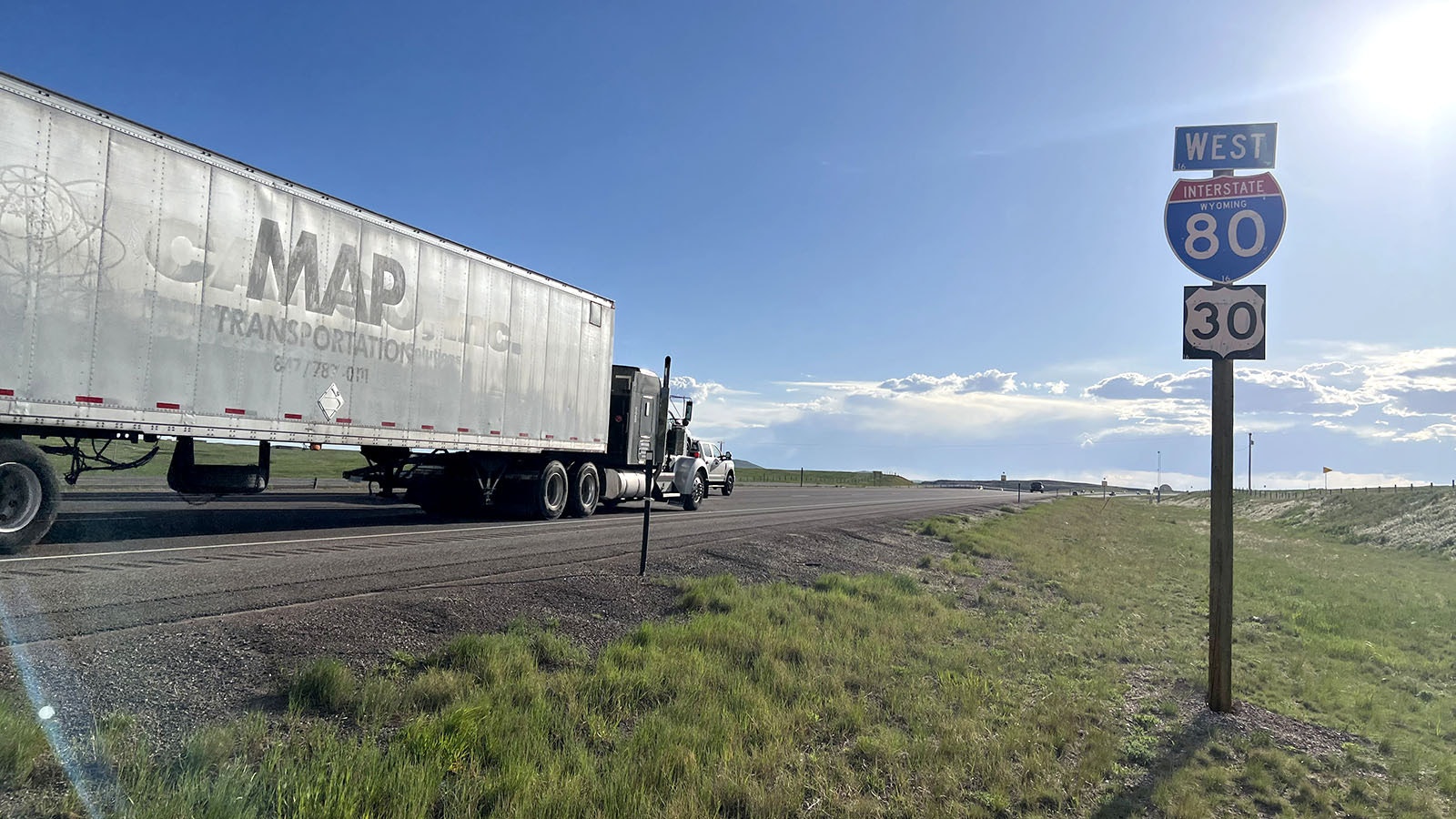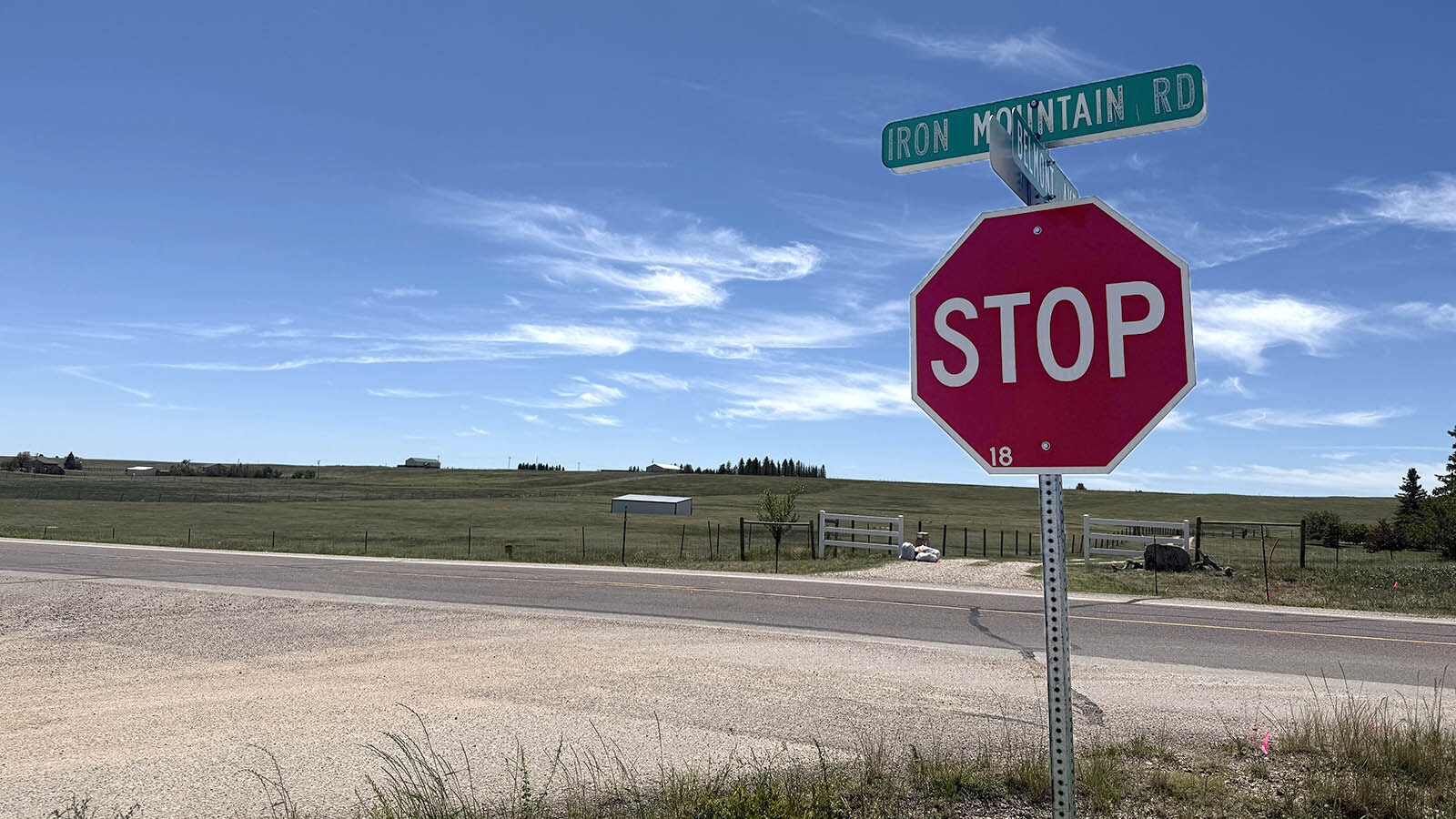The 403-mile Interstate 80 corridor between Evanston and Pine Bluffs is widely considered one of the most dangerous winter highways in the United States.
That’s why the Wyoming Legislature’s Management Council has directed the Joint Transportation Committee to make improving I-80 safety a top priority.
During the committee’s meeting Friday, state Rep. Landon Brown, R-Cheyenne, brought up a near death collision that happened in February when a Wyoming Highway Patrol trooper walking back to his vehicle was nearly struck by an out-of-control semitrailer skidding off the road.
“We’ve got a serious situation where these truckers seem to be ignoring or not caring (about the closures),” he said.
Wyoming Department of Transportation Interim Director Darin Westby told the committee closures on I-80 were “shockingly, glaringly” higher this past winter than in recent years because of extreme weather.
The road was closed to commercial vehicles an average of 9.8% of the time November through April, and passenger vehicles 6.25% of the time.
Westby said that one particular Wyoming trucking company told him that I-80 road closures cost it somewhere between $1 million to $1.5 million in lost revenue this past winter.
Sen. John Kolb, R-Rock Springs, said there is a perception that I-80 closes more now than it has in the past and Tom DeHoff, WYDOT assistant chief engineer for operations, said that’s accurate.
He said wind is the most common reason for weather-based road closures, initiated when gusts exceed 60 mph.
“It seems like the wind, the weather, the wind has really changed, the environment has changed,” DeHoff said.

Dangerous And Busy
Traffic along I-80 can routinely see to as many as 22,000-24,000 vehicles per day, particularly on the far east and western parts of the highway near Wyoming’s borders with Utah and Nebraska, said WYDOT Assistant Chief Engineer for Engineering and Planning Keith Fulton. The traffic is not evenly dispersed though, as Fulton said some other areas receive as few as 8,000 vehicles a day.
A WYDOT crew recently did an unofficial study on how much of this traffic is made up by out-of-state vehicles.
“We’re comfortable saying that probably about 80-85% of traffic (on I-80) is out-of-state, passing directly through the state, from border to border,” Fulton said.
There have been about 8,100 crashes on I-80 over the last five years, of which nearly 51% involved a commercial vehicle.
Out-of-state drivers were involved in the majority of crashes, as 90% of all commercial vehicle crashes involved out-of-state drivers and 76% out-of-state driver’s license holders.
It was an out-of-state truck driver who killed an EMT in December on I-80 outside of Rawlins who was already responding to another accident.
Blowovers
There were 239 blowover crashes during the five-year period.
Sen. Brian Boner, R-Douglas, proposed drafting a bill that increases penalties for light and high-profile vehicles that disregard closures on I-80.
There already is an increased penalty for illegally going past a road closed sign in Wyoming, but Westby and Wyoming Highway Patrol Commercial Carrier and Ports of Entry Section Capt. Dan Wyrick said the only enforcement mechanism staff has for high-profile closures is to cite drivers after they’ve blown over.
Brown, the committee co-chairman, said it might be time for the Legislature to enact harsher and more direct penalties, as preventing these types of crashes is one of the biggest issues facing the roadway.
“I think that’s part of the frustration is that when you see all those blowovers, somebody thought that those rules just didn’t apply to them,” Boner said. “That is something that could make a difference. You talk about the amount of impact that has on every other commercial vehicle that’s following the rules and they lose millions of dollars in revenue.”
Wyrick said there are federal regulations requiring that commercial driver’s license (CDL) holders can speak, read and communicate in English.
Kolb pressed the issue, asking WYDOT officials if many drivers involved in crashes are unable to read English or are purposely violating the closures.
Wyrick was not able to provide an answer, but Sheila Foertsch, president and CEO of the Wyoming Trucking Association, said there is some lack of English proficiency within her industry.
Safety First
Westby said his agency has made safety a top priority and cited an overall reduction in incidents on Wyoming roads.
DeHoff said the stretch of I-80 between Rawlins and Laramie is typically considered the most dangerous and most often closed part of the highway because of high winds that hit this corridor. But he said this past winter was different as the section between Rawlins and Rock Springs was the worst.
He said snow fencing is one solution for dangerous road conditions as it affects both visibility and road conditions. Without any wind, he said WYDOT staff can always keep roads open no matter how much snow falls.
Fulton said 78% of the commercial vehicle crashes happened when roads had ice, frost or snow on them.
Rep. Ryan Berger, R-Evanston, and Wyrick said another issue has been distracted drivers, the lure of their personal cellphone and tablet screens pulling their eyes from the road.
Wyrick said some states are adding commercial vehicle-specific lanes for trucks attempting to summit steep climbs, but Brown said this would be very costly in Wyoming. Kolb expressed skepticism that commercial lanes work or that truck drivers are cited for not getting out of the left lane on three-lane roads when climbing a hill.
DeHoff said if people stayed within a 10 mph difference of one another on the roads, it would drastically improve public safety. He believes about 93% of crashes are caused by impatient or “digitally drunk” behavior.
“We can put up signs, we can put up the laws,” he said. “It’s a great idea to keep them to the right, but you know behaviorally they will not do that.”
Kolb believes this issue will never be resolved. Instead, he offered the idea of keeping truckers in the right-hand lane except when they pass another vehicle.
Driver Shortage
Sen. Stephan Pappas, R-Cheyenne, believes also contributing to the problem is that a shortage of truck drivers has led to more inexperienced drivers out on the highways.
“They’re putting people on the road a lot sooner,” he said. “And then when they get to Wyoming, they have less experience driving in wind and in ice and snow.”
Foertsch said there is a shortage of 78,000 truck drivers nationally, and the industry will be tasked with hiring 1.5 million drivers over the next five years to meet its needs.
“Those drivers aren’t out there,” she said. “That’s a huge issue and it will continue to plague not only the trucking industry, but the state agencies that rely on CDL holders, but also diesel techs.”
Brown said he’s aware of a number of companies where, if a driver is cited, the company they work for will pay the fine, removing any deterrent drivers have to violate the law.
“They’re going to do anything and everything to keep those wheels turning as specifically as possible,” he said.
Continuing Hurdles
Fulton said that even though I-80 makes up about 6% of Wyoming roads, it takes up about 16% of the department’s total maintenance budget. It also accounts for about 9% of WYDOT’s overall budget.
WYDOT attempts to do three or four projects on I-80 to try and keep up with the highway’s maintenance needs.
As of Friday, all mountain pass roads were open in Wyoming. Westby described WYDOT’s efforts this winter as “herculean.”
“To keep the roads open with the winter we’ve been dealing with just has been tremendous,” he said.
Once the roads open, the surface mitigation battle must begin. Wyoming winters are particularly tough on pavement decimated by high winds and a substantial melt-freeze cycle.
“We’d have 60-degree days and then sub-zero temperature the next day, and back to 70,” Westby said. “That freeze-thaw is not good on anything, let alone horizontal construction.”
Westby said WYDOT staff are fatigued after the harrowing winter, with most districts running at about 50% staffing levels.
This year, the Legislature passed a compensation increase for all state employees that ran around 8% on average. Westby said this will not only help recruit new employees, but also retain current staff.
But he said the state still needs to “shift the paradigm” and think outside the box to make “public employment desirable again.”
“I don’t know if it’s a cultural thing, a demographic thing, what is it that we need to do to stop beating our head against the wall?” Westby questioned. “We need to think and change how we think to try to recruit those people.”
Contact Leo Wolfson at Leo@CowboyStateDaily.com





